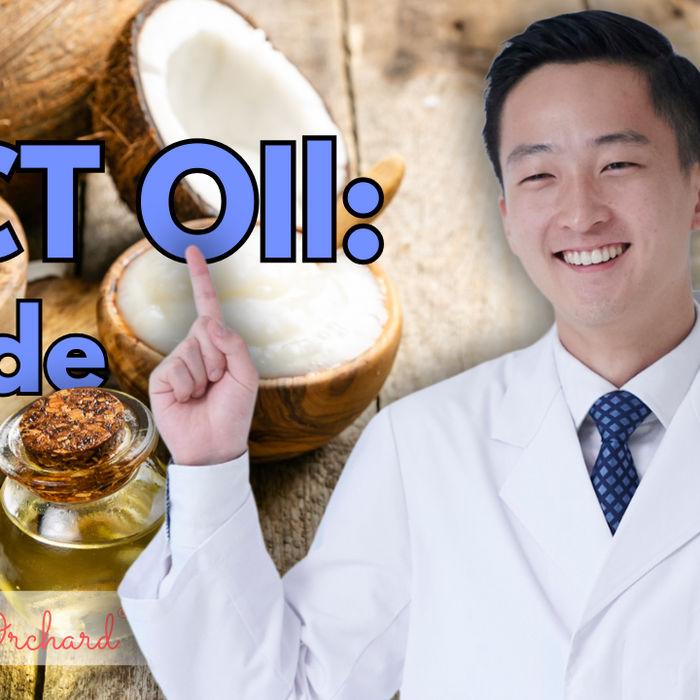

Whey Protein: Guide
Key Takeaways
- Whey protein is a high-quality, complete protein that contains all nine essential amino acids and is rapidly absorbed by the body.
- It supports multiple health and fitness goals through promoting muscle growth, weight management, exercise recovery, and immune system function.
- There are three main types of whey protein - concentrate, isolate, and hydrolysate - each offering different benefits for protein content, digestibility, and price points.
- Whey protein is highly versatile and easy to use in shakes, smoothies, baked goods, and other recipes for convenient nutrition.
- It offers advantages over other protein sources due to its superior bioavailability and complete amino acid profile compared to plant-based or casein proteins.
- Some considerations apply when using whey protein, particularly for those with lactose intolerance or milk allergies who should choose isolates or hydrolysates accordingly.
Whey protein has become a household name in fitness and nutrition circles, but what makes it so special? Did you know that whey protein is one of the most bioavailable proteins, meaning your body absorbs it more efficiently than many other sources? This characteristic makes it ideal for building muscle, aiding recovery, and even supporting weight management. Whether you’re an athlete, fitness enthusiast, or simply looking to boost your nutrition, whey protein has a role to play.
This guide from Health Orchard will explore the benefits of whey protein, the different types available, how to use it effectively, and how it compares to other protein sources. By the end of this article, you’ll have all the information you need to incorporate whey protein into your daily routine confidently.

What is Whey Protein?
Whey protein is a complete, high-quality protein derived as a byproduct of cheese production. During the cheese-making process, milk is separated into curds (solid portion) and whey (liquid portion). This liquid whey is then filtered, purified, and dried into a protein powder that is rich in essential amino acids, including branched-chain amino acids (BCAAs) like leucine, isoleucine, and valine. These amino acids are essential because they are not produced by the body and must be obtained through diet, making whey protein a vital source of nourishment for many.
What sets whey protein apart is its exceptionally high biological value (BV), which measures how effectively the body can utilize the protein consumed. Whey protein has one of the highest BV scores among all protein sources, outperforming alternatives such as casein, soy, and plant-based proteins. This makes it particularly valuable for athletes, bodybuilders, and individuals seeking efficient muscle repair and growth. Furthermore, its fast-digesting nature ensures a quick delivery of nutrients to the muscles, making it a staple in fitness and nutrition routines worldwide.
Benefits of Whey Protein
Muscle Growth and Repair
Whey protein plays a key role in muscle growth and repair due to its high content of essential amino acids, particularly leucine, which directly stimulates muscle protein synthesis. After exercise, the muscles experience microtears that need to be repaired for growth and recovery. Consuming whey protein post-workout ensures that your muscles receive the necessary building blocks to repair these tears, resulting in stronger, more resilient muscle tissue.
Studies consistently show that whey protein outperforms other protein sources in promoting muscle hypertrophy (growth) when paired with resistance training. Its fast absorption rate delivers amino acids to the muscles in as little as 20 minutes after consumption, kickstarting the recovery process. Whether you’re a professional athlete or someone engaging in regular exercise, incorporating whey protein can enhance your ability to build and maintain lean muscle mass effectively.
Weight Management
Whey protein supports weight management by promoting satiety, which helps control appetite and reduces overall calorie consumption. Protein, in general, has a higher thermic effect compared to fats and carbohydrates, meaning the body burns more calories digesting it. This makes whey protein an excellent choice for those looking to reduce their caloric intake while preserving lean muscle.
Research also indicates that whey protein supplementation can improve body composition by aiding fat loss while maintaining muscle mass. Consuming whey protein between meals or as a meal replacement can help reduce cravings and prevent overeating, making it an effective tool for weight control. When combined with a balanced diet and regular exercise, whey protein can significantly enhance fat loss while preserving overall strength and endurance.
Improved Recovery
After intense physical activity, the body enters a state where muscle tissues require immediate repair, and energy stores need replenishing. Whey protein is especially effective for recovery because it digests quickly, allowing amino acids to reach the muscles rapidly. This speeds up the repair process, helping you recover faster and perform better during subsequent workouts.
In addition to promoting muscle repair, whey protein contains compounds like BCAAs, which reduce muscle soreness and fatigue. For athletes and fitness enthusiasts, faster recovery means the ability to train harder and more frequently. Including whey protein in your post-workout routine can minimize downtime and improve overall athletic performance.
General Health Benefits
Whey protein is not just for athletes—it offers several general health benefits, too. It contains bioactive compounds such as lactoferrin and immunoglobulins, which support immune function by enhancing the body’s ability to fight off infections and inflammation. For individuals with weakened immune systems or increased physical stress, whey protein can be a beneficial supplement.
Additionally, whey protein provides a nutrient-dense option for those who struggle to meet their protein requirements due to dietary restrictions or age-related muscle loss. It is often recommended for older adults to help combat sarcopenia (age-related muscle wasting) and improve overall health. With its wide-ranging benefits, whey protein can be an excellent addition to almost anyone’s diet.
Types of Whey Protein
Whey Protein Concentrate
Whey protein concentrate is the least processed form of whey and retains a significant portion of its natural nutrients, including protein, carbohydrates, and fats. Typically containing 70–80% protein by weight, it is an affordable option for those who want to boost their protein intake without breaking the bank. It also contains beneficial compounds such as immunoglobulins and lactoferrin, which provide added health benefits.
Because it has moderate amounts of fat and carbohydrates, whey protein concentrate is ideal for those who are not on strict calorie or macronutrient control. It’s widely used by individuals looking to improve their general fitness or supplement their diet. However, those with lactose intolerance may experience mild digestive discomfort when consuming this form of whey protein.
Whey Protein Isolate
Whey protein isolate undergoes additional processing to remove almost all fats and carbohydrates, resulting in a protein content of 90% or more. This makes it an excellent choice for individuals seeking a high-protein, low-calorie option, particularly during weight loss or competition preparation phases. The reduced lactose content also makes it a better choice for those with lactose intolerance.
The purity of whey protein isolate allows it to dissolve easily and mix well, making it convenient for protein shakes and smoothies. Although it is slightly more expensive than concentrate, its high protein yield and minimal fat and carb content make it a go-to for athletes, bodybuilders, and anyone following a calorie-conscious diet.
Whey Protein Hydrolysate
Whey protein hydrolysate is the most processed form of whey, often referred to as "pre-digested" because the protein chains are broken down into smaller peptides. This allows for faster digestion and absorption, making it particularly beneficial for post-workout recovery. Athletes and individuals with sensitive digestive systems often turn to hydrolysate for its quick action and reduced likelihood of causing stomach discomfort.
Because it is highly processed, whey protein hydrolysate is usually the most expensive option on the market. It’s often found in specialized recovery products or medical nutrition formulas for individuals with specific dietary needs. While it may not be necessary for the average consumer, those with intensive fitness regimens or recovery requirements may find its rapid absorption invaluable.
How to Use Whey Protein Effectively
Serving Sizes and Timing
The typical serving size of whey protein is 20–30 grams per scoop. It's most effective when consumed:
- Consuming whey protein within 30 minutes after exercise helps maximize muscle protein synthesis and recovery.
- Strategic protein intake between meals helps maintain stable blood sugar levels and reduces excessive hunger.
- A protein shake combined with healthy fats, complex carbs, and micronutrients can serve as a complete meal replacement when whole food options aren't available.
Mixing and Recipes
Whey protein is versatile and easy to mix:
- Combining whey protein with 8-12 ounces of cold water or milk creates a basic shake that delivers quick nutrition.
- Blending whey protein with fruits, vegetables, healthy fats, and superfoods creates nutrient-dense smoothies that support overall health goals.
- Incorporating whey powder into baked goods, breakfast items, or energy snacks boosts the protein content of everyday recipes.
Whey Protein Vs. Other Protein Sources
Casein Protein
Whey protein's rapid absorption makes it ideal for post-workout recovery, while casein's slower digestion rate provides sustained amino acid release over several hours. Many athletes combine both proteins strategically, using whey post-workout and casein before bed to optimize muscle recovery and growth. Research shows the different digestion rates of these proteins can complement each other, with whey triggering immediate protein synthesis and casein helping prevent muscle breakdown during longer fasting periods.
Plant-Based Proteins
While plant proteins like pea, hemp, and rice can be effective alternatives to whey, they typically require combining multiple sources to achieve a complete amino acid profile. Modern processing techniques have improved the bioavailability and taste of plant proteins, though they may still require larger serving sizes to match whey's amino acid content. Plant-based options continue to evolve with new formulations and blends designed to better match whey's amino acid profile and absorption rates.
A Complete Protein
Whey protein's complete amino acid profile, particularly its high leucine content, makes it exceptionally effective for stimulating muscle protein synthesis. The natural composition of whey includes optimal ratios of essential amino acids that the body cannot produce on its own. Its high biological value means the body can efficiently utilize whey protein for muscle repair and growth compared to other protein sources.
Potential Side Effects and Considerations
While whey protein is safe for most people, there are a few considerations:
- Lactose Intolerance:Those with lactose intolerance may experience digestive discomfort when consuming whey protein concentrate. Isolate or hydrolysate are better options.
- Allergies: Some individuals may be allergic to whey protein and should avoid it altogether.
- Balanced Nutrition: Relying too heavily on whey protein can displace other essential nutrients. It’s best to use whey as a supplement, not a replacement for whole foods.
Conclusion
Whey protein has emerged as a well-researched dietary supplement, offering proven benefits for muscle growth, recovery, and overall health. Its versatility and high bioavailability make it a practical choice for both athletes and fitness enthusiasts looking to enhance their nutrition and performance goals.
For those ready to incorporate whey protein into their routine, Health Orchard offers a selection of quality options to match different needs and preferences. From concentrates to isolates, you can compare products and prices across trusted retailers to find the right whey protein supplement that aligns with your health and fitness journey. Take the next step toward a healthier, stronger you by exploring the whey protein options available at Health Orchard today!
Frequently Asked Questions about Whey Protein
1. What does whey protein do for you?
Whey protein supports muscle growth and repair, enhances post-workout recovery, and increases strength gains. It provides essential amino acids for protein synthesis, boosts metabolism, and may help with weight management. Whey also supports immune function and can improve body composition.
2. Is it good to drink whey protein every day?
Daily whey protein consumption is generally safe for most people. It helps maintain consistent protein levels, supports muscle maintenance, and aids recovery. However, stick to recommended dosages (20-30g per serving) and ensure it's part of a balanced diet.
3. How many scoops of whey protein per day?
Most people benefit from 1-2 scoops (20-40g) daily, depending on body weight, activity level, and goals. Athletes or those building muscle may need 2-3 scoops. Don't exceed 2g of protein per kilogram of body weight from all sources combined.
4. What are the disadvantages of whey protein?
Common disadvantages include digestive issues (bloating, gas), potential lactose intolerance reactions, and kidney stress if overconsumed. Some people experience acne breakouts, headaches, or increased thirst. Quality varies among brands, and some products contain added sugars or artificial ingredients.
5. What are the benefits of whey protein?
Pure whey protein provides rapid absorption, complete amino acid profile, and high biological value. It stimulates muscle protein synthesis, supports immune function, and aids recovery. Additional benefits include increased satiety, improved body composition, and convenient nutrition.
6. Is whey protein safe for the kidneys?
Whey protein is generally safe for healthy kidneys when consumed within recommended amounts. However, those with existing kidney issues should consult healthcare providers before use. Maintaining proper hydration and not exceeding daily protein requirements is important.
7. Who needs whey protein?
Athletes, bodybuilders, strength trainers, and those recovering from injury benefit most from whey protein. It's also useful for older adults maintaining muscle mass, people with increased protein needs, busy individuals seeking convenient nutrition, and those struggling to meet protein requirements through diet.
8. Does whey protein reduce belly fat?
While whey protein alone doesn't directly target belly fat, it can support fat loss by increasing satiety, boosting metabolism, and preserving lean muscle during weight loss. Combined with proper diet and exercise, it may help improve body composition.
9. Can I take whey protein without a workout?
Yes, whey protein can be beneficial even without exercise. It supports general nutrition, maintains muscle mass, and provides essential amino acids. However, maximum benefits are achieved when combined with regular resistance training and proper nutrition.
10. Can I drink whey protein on an empty stomach?
Yes, whey protein can be consumed on an empty stomach, but some people may experience digestive discomfort. Taking it with food or mixing with milk/smoothies can improve tolerance. Morning consumption may help with satiety and muscle protein synthesis throughout the day.
References
- MedicalNewsToday, “What are the benefits and risks of whey protein?”, October 2023.
- Healthline, “Whey Protein 101: The Ultimate Beginner's Guide”, February 2023.
- Cleveland Clinic, “Is Whey Protein Good for You?”, January 2021.
- MedPark Hostpital, “Whey Protein - Types, Benefits, Why should I take it?”, October 2023.
- WebMD, “Difference Between Whey and Whey Isolate”, June 2024.
- Health, “What Is Whey Protein—And What Are Its Benefits?”, January 2024.
- Nutrients (MDPI), “Whey Protein Supplementation Enhances Whole Body Protein Metabolism and Performance Recovery after Resistance Exercise: A Double-Blind Crossover Study”, July 2017.
- Verywell Health, “Everything You Need to Know About Whey Protein”, August 2024.
- Healthcare (MDPI), “Investigating the Health Implications of Whey Protein Consumption: A Narrative Review of Risks, Adverse Effects, and Associated Health Issues”, January 2024.
- Dr. Axe, “Whey Protein Benefits for Building Muscle, Burning Fat & More”, January 2025.







